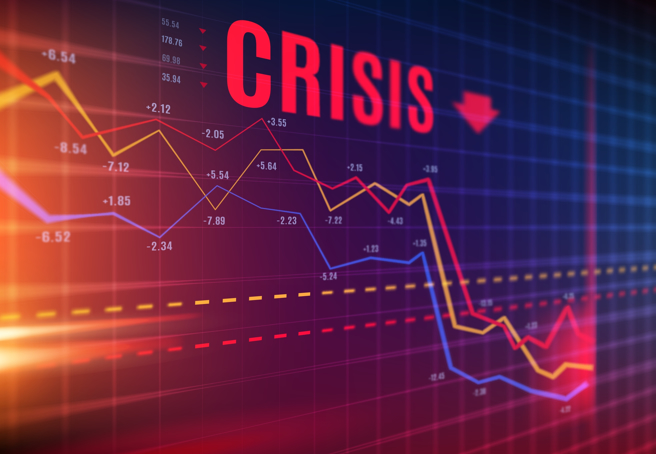Introduction
Market volatility is a key characteristic of financial markets, reflecting the constant ebb and flow of investor sentiment, macroeconomic trends, geopolitical factors, and various financial influences. Over the past few years, global markets have experienced significant volatility due to events such as the COVID-19 pandemic, shifting monetary policies, inflation concerns, and geopolitical tensions. This volatility can create both challenges and opportunities for investors who are looking to navigate the complexities of the market environment.
Financial experts and analysts play a crucial role in interpreting market fluctuations and identifying investment opportunities amidst the chaos. They examine market behavior through various lenses, including technical analysis, economic fundamentals, and macroeconomic indicators, to offer insights that can help investors make informed decisions.
This article explores how experts interpret current market volatility and the potential investment opportunities that arise from it. By understanding how market volatility affects different sectors and asset classes, investors can better position their portfolios to capitalize on emerging trends and manage risks effectively.
Section 1: Understanding Market Volatility
1.1 The Nature of Market Volatility
Market volatility refers to the degree of variation in the price of financial assets, such as stocks, bonds, commodities, and currencies. High volatility implies that asset prices are subject to rapid and significant fluctuations, while low volatility indicates more stable price movements. Volatility can be driven by numerous factors, including:
- Macroeconomic Factors: Economic data, such as GDP growth, inflation, unemployment rates, and consumer spending, significantly influence market volatility. When there are unexpected economic shocks or changes in economic policy, markets can react sharply.
- Geopolitical Events: Events such as wars, political instability, trade disputes, and elections can create uncertainty in the market. The outcome of such events can drastically alter investor sentiment and cause market movements.
- Monetary Policy: Central bank actions, particularly interest rate decisions and quantitative easing programs, have a significant impact on market volatility. When central banks tighten or ease monetary policy, it can shift market expectations and lead to sudden price changes.
- Market Sentiment and Behavioral Factors: Investor psychology and behavior, such as fear, greed, or herd mentality, can also drive volatility. News, rumors, or speculation can cause sudden shifts in investor sentiment, leading to price swings.
1.2 Measuring Market Volatility
Experts use several tools and indicators to measure market volatility and assess its impact on financial markets:
- VIX (Volatility Index): Often referred to as the “fear gauge,” the VIX measures the implied volatility of the S&P 500 options. A higher VIX suggests greater market uncertainty, while a lower VIX indicates a more stable environment.
- Historical Volatility: Historical volatility tracks the past price fluctuations of an asset or index over a specific period. While it doesn’t predict future volatility, it provides valuable insights into an asset’s risk profile.
- Implied Volatility: Implied volatility is the market’s expectation of future volatility, derived from options pricing. It can provide a sense of investor sentiment and expectations regarding market conditions.
- Bollinger Bands: These are technical analysis tools that use standard deviations to measure price volatility. When prices approach the upper or lower bands, it signals high volatility, while prices near the middle indicate lower volatility.
Section 2: Expert Views on Current Market Volatility
2.1 Factors Driving Current Market Volatility
Experts suggest that current market volatility is largely driven by a combination of macroeconomic conditions, geopolitical tensions, and market sentiment. Some of the primary factors contributing to the heightened volatility include:
- Inflation and Interest Rates: Inflation has been a persistent concern globally, particularly in developed markets like the U.S. and Europe. Central banks, such as the Federal Reserve and the European Central Bank, have been responding with aggressive interest rate hikes to curb inflation. This has increased market uncertainty as investors try to predict the long-term impact of higher rates on economic growth and corporate earnings.
- Geopolitical Tensions: Ongoing geopolitical conflicts, especially the war in Ukraine, have disrupted global supply chains, raised energy prices, and created uncertainty in markets. The war has contributed to inflationary pressures and affected global trade, which in turn impacts investor confidence.
- Supply Chain Issues: Despite signs of recovery, supply chains continue to face disruptions due to lingering pandemic-related issues and geopolitical tensions. These disruptions have led to shortages of key products, contributing to inflation and market uncertainty.
- Corporate Earnings Reports: Many companies have faced pressure from higher input costs, labor shortages, and supply chain issues. While some sectors have been able to pass on costs to consumers, others have seen profit margins shrink, leading to volatility in stock prices.
- Shifts in Consumer Behavior: Changing consumer spending patterns, particularly as inflation rises and interest rates increase, are also contributing to market fluctuations. As disposable income declines, investors are closely monitoring consumer-facing sectors such as retail, travel, and luxury goods.
2.2 The Role of Central Banks and Monetary Policy
Central banks are often at the center of discussions about market volatility. Experts point out that while central banks are raising interest rates to combat inflation, this policy tightening can lead to unintended consequences for the market.
- Interest Rate Hikes: Central banks, particularly the Federal Reserve, have raised interest rates aggressively to curb inflation. Higher rates increase the cost of borrowing, which can slow down consumer spending and business investment. The market often reacts negatively to interest rate hikes, especially in growth sectors that rely on cheap capital to fund expansion.
- Quantitative Tightening: In addition to raising interest rates, central banks are also reducing the size of their balance sheets through quantitative tightening. This move further reduces liquidity in the market and can lead to price corrections in riskier assets.
- Market Expectations vs. Reality: Experts highlight that market volatility often arises when there is a mismatch between investor expectations and central bank actions. If the market expects less aggressive tightening or sees inflation data as less concerning than central banks perceive it to be, volatility can spike as investors adjust their positions.

Section 3: Investment Opportunities Amid Volatility
While market volatility often leads to uncertainty and risk aversion, it can also create opportunities for savvy investors. Experts identify several areas where investors can potentially benefit from the current market environment:
3.1 Defensive Stocks and Sectors
In times of market uncertainty, experts often recommend defensive sectors that tend to be less sensitive to economic cycles. These sectors include:
- Utilities: Utility companies typically provide essential services, such as electricity, water, and natural gas. Because demand for these services is relatively stable, utility stocks are considered defensive investments that can weather market volatility.
- Consumer Staples: Companies that produce essential consumer goods, such as food, beverages, and household products, tend to perform well even during economic downturns. Investors often flock to these stocks during periods of volatility as they provide steady earnings and dividends.
- Healthcare: Healthcare stocks, including pharmaceuticals, medical equipment manufacturers, and health insurance companies, are considered less vulnerable to economic fluctuations. People continue to need healthcare regardless of economic conditions, making this sector attractive during periods of uncertainty.
3.2 Dividend Stocks and Income Investments
Dividend-paying stocks are often favored during volatile periods because they provide a steady income stream, which can help offset market fluctuations. Experts suggest focusing on:
- High-Dividend Yield Stocks: Companies with stable earnings and a strong history of paying dividends can be an attractive option during periods of market volatility. These stocks can offer income stability even when stock prices are volatile.
- Real Estate Investment Trusts (REITs): REITs, which invest in income-producing properties, also tend to pay regular dividends. They can provide both income and potential capital appreciation, making them a favorable option during periods of market instability.
- Fixed Income Securities: Bonds and other fixed income securities are often seen as safe havens during market turmoil. Government bonds, especially from stable economies, provide lower risk and consistent returns.
3.3 Growth Stocks in Emerging Sectors
While defensive sectors are typically favored during periods of volatility, some experts suggest that investors can still find opportunities in growth sectors that are emerging or benefiting from long-term trends. These sectors include:
- Technology: Despite market volatility, technology continues to be a sector with strong growth potential. Companies involved in cloud computing, artificial intelligence, cybersecurity, and semiconductor manufacturing are driving innovation and can offer substantial returns over the long term.
- Renewable Energy: As global concerns about climate change intensify, renewable energy companies in solar, wind, and electric vehicles are poised for growth. The shift toward green energy policies and sustainable practices presents opportunities for investors looking to tap into the green economy.
- Healthcare and Biotechnology: Advances in biotechnology, particularly in areas like gene editing, personalized medicine, and aging research, provide growth opportunities. Companies at the forefront of these innovations could experience substantial growth in the years to come.
3.4 Alternative Assets
In uncertain times, some investors turn to alternative assets to diversify their portfolios and manage risk. These assets can include:
- Precious Metals: Gold, silver, and other precious metals are often viewed as safe havens during periods of economic uncertainty. As inflation rises and fiat currencies face pressure, these assets can act as a store of value.
- Cryptocurrencies: While volatile in their own right, cryptocurrencies like Bitcoin and Ethereum have gained traction as alternative investments. Some investors view cryptocurrencies as a hedge against inflation and currency devaluation.
- Private Equity and Venture Capital: For accredited investors, private equity and venture capital can provide access to high-growth companies that are not yet publicly traded. These investments can offer higher returns, though they come with added risk and require a longer investment horizon.
Section 4: Conclusion
Current market volatility presents both challenges and opportunities for investors. While economic uncertainty, geopolitical tensions, inflation, and interest rate hikes contribute to market fluctuations, there are still various strategies to navigate the market successfully. Defensive sectors, dividend stocks, growth opportunities in emerging industries, and alternative assets provide ways to manage risk and capture potential returns during volatile periods.
Experts suggest that investors maintain a diversified portfolio, stay informed about macroeconomic trends, and adopt a long-term perspective to weather market volatility. By understanding the factors driving market fluctuations and staying focused on fundamental investment principles, investors can find opportunities to succeed even in uncertain times.



































